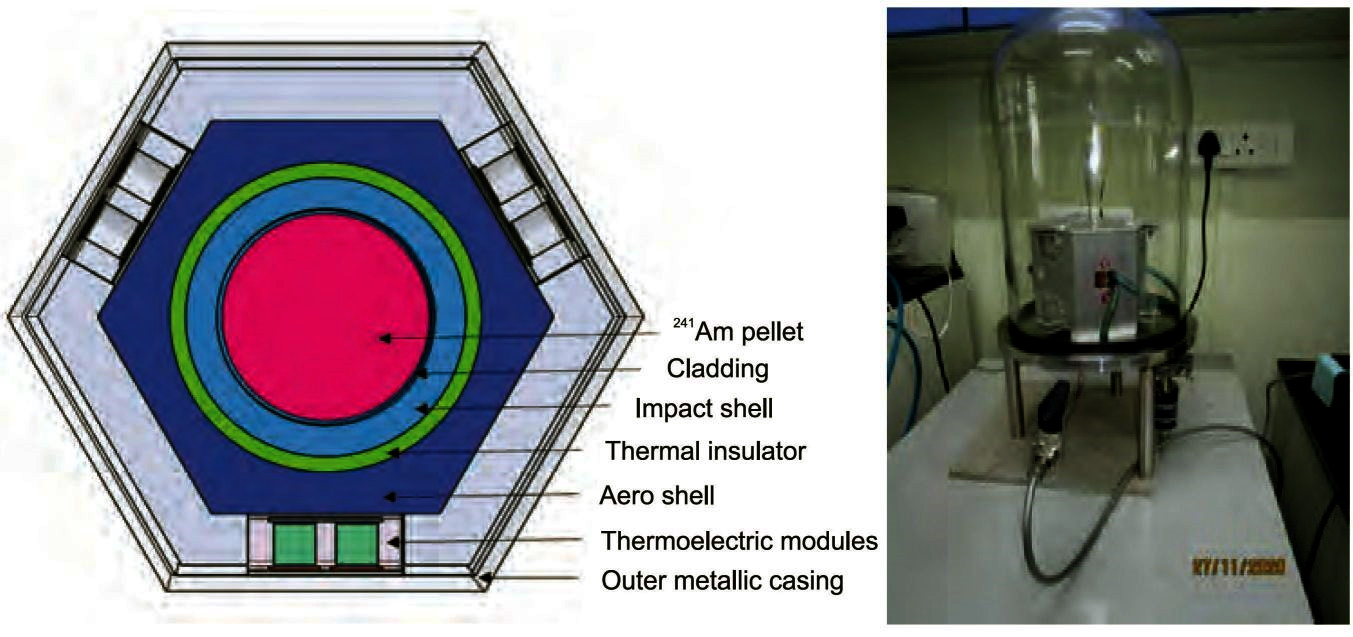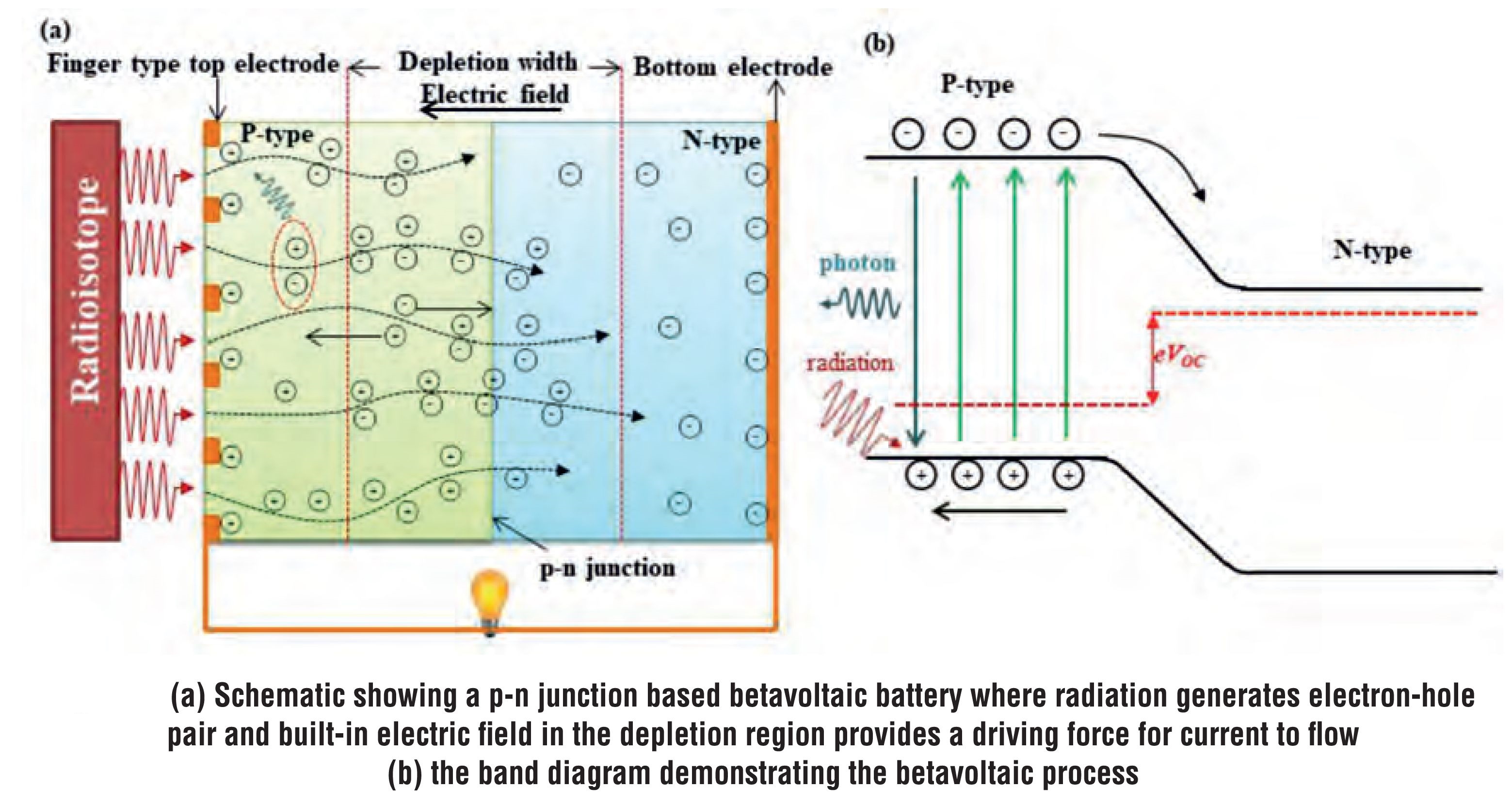Multiple studies underway at the Bhabha Atomic Research Centre [BARC] to meet Indian Strategic requirement.
Amongst the myriad of Research activities underway at BARC, realising the Science for practical deployment of a Nuclear Battery holds special significance. Unlike the "conventional" Fission/Fusion Power generation, they do not rely on the "bad boy" Chain Reaction process. Instead, the magic is done harnessing Radioactive decay of Isotopic elements. As elucidated in the illustration below, the Science of Nuclear Battery encompasses an entire gamut of operating principles, each weighed down by it's cons, levitated by pros. Based on end-goal requirements, one may choose underlying principle for design.
At BARC, multiple efforts are underway towards the realisation of a practical product. In it's thrust to demonstrate Non-Thermal, indirect method, it announced that,
"A radiation-resistant nuclear battery was demonstrated, jointly by Physics Group and Nuclear Recycle Group, utilizing the principles of beta-photovoltaic, wherein high beta energy of an electro deposited 106Ru (recovered from high level liquid waste) source is allowed to fall on a scintillator (indigenously grown Ce-doped Gd3Ga3Al2O12 by TPD), and the generated photons are converted to electricity using a photovoltaic device. Performance of the radiation resistant battery (beta-photovoltaic) was compared with that of a beta voltaic battery (see Fig.1). Long term radiation stability test carried out revealed no significant reduction in the output of the beta-photovoltaic device (Fig.2)."
Photovoltaic Cells, that School taught us, won Albert Einstein a Nobel Prize. Simply put, here the Radioisotopic Ruthenium-106 releases Beta particles during decay. When these particles hit a Scintillator [Photon Source], it liberates the Photons. These Photons, then, strike a Photovoltaic device, where a Potential Difference is created, generating electricity. The challenge lies in designing suitable photovoltaic receptors that can convert the energy of impinging photons into electrical energy, with minimum loss. BARC recently reported this development in the latest issue of it's bi-monthly Newsletter.
Breakthrough has also been achieved in demonstrating electricity production utilising Decay heat.
"BARC has indigenously built a Radioisotope Thermoelectric Generator (RTG) using minor actinide based sealed sources and bismuth telluride based thermoelectric legs (Fig.1). The device converts decay heat produced by the radioisotope into electricity through Seebeck effect. By virtue of having no moving parts, RTG offers high reliability with long service life, and hence it is an ideal power source for remote applications. Proof of concept for applications of RTG in remote sensing and remote surveillance was demonstrated successfully. This demonstration suggests its utility as a power source in the future deep space mission of the Department of Space."
Here, the Alpha decay of Americium-241 is acting as the source. These high-energy Alpha particles, upon striking a metallic surface, such as the Copper Block used in the experiment, transfers significant energy in the form of heat. This creates the temperature difference required to trigger Seebeck Effect, leading to electricity flow. A Battery powered by Am-241, with a half-life of 432.2 years should, theoretically, be operational as long. No chemical battery is a patch on such a device, in theory or otherwise.
That said, Nuclear Batteries come with their own set of baggages. For one, their electrical power output is measurable in microwatt-nanowatt scale. Chemical batteries, OTOH, reads conveniently on a milliwatt scale. Operational efficiencies of Nuclear Batteries are in the range of 2-10%. Compare that with new generation of Li-ion Batteries that are around 90% efficient. No comparison. The biggest elephant in the circus is the radiation degradation battery's various elements due to continuous bombardment of Alpha/Beta particles from source. Radiation hardening of is a consideration, else acceptance of lowered operational life is a compromise. Securing such a device from attempts of thefts & pilferage is another challenge, unique to Nuclear matters.
The need for Nuclear Batteries is niche. Deep Space missions, where the Sun don't shine, for example, would require such a power source for operation. The most famous example highlighting it's application is Voyager-1 mission, that uses 3 Nos. of Plutonium-238 powered Radioisotope Thermoelectric Generator [RTG] to power it. No conventional battery could keep up here. The erstwhile Soviets had a common practise of putting such power sources in remote Lighthouses.
For Indian Space programme with it's long-term vision to travel very long would demand availability of such a solution. Ultra-long long endurance deployment of military hardware, that precludes option of revisit would benefit from such a power source. Availability of such a source would, in fact, open up the possibility of contemplating such missions.
In India, this type of battery was made most famous by the American device that got lost in the Himalayas. India's closed cycle Nuclear programme offers it the unique benefit of having an abundant source of Radioactive Isotopes. Produced as a by-product of Nuclear Fission, they are being harvested indigenously by reprocessing the high level Radioactive Waste generated.
Small yet significant progress, BARC has made, that holds great promises for the future, & makes India one amongst the very few with such a technology.
Godspeed





